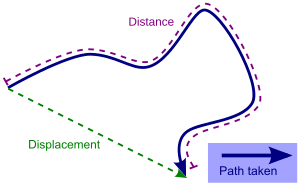
The McCutcheon index or chemotactic ratio is a numerical metric that quantifies the efficiency of movement. It is calculated as the ratio of the net displacement of a moving entity to the total length of the path it has traveled.
The index acts as an evaluative measure of the directness of movement. A value close to 1 indicates that a moving entity performed its movement in a very direct manner, minimizing detours. On the other hand, a lower value indicates that the entity has achieved only a marginal net displacement, despite traveling a considerable distance. The index is used to evaluate movements of, for example, leukocytes, bacteria, or amoebae.
It is named after Morton McCutcheon who introduced it to describe chemotaxis in leukocytes.
References
- Chemotaxis in Leukocytes Archived 2012-07-15 at archive.today
- The response of human neutrophils to a chemotactic tripeptide
- Levandowsky, Michael; White, Benjamin S.; Schuster, Frederick L. (1997). "Random Movements of Soil Amebas" (PDF). Acta Protozoologica. 36 (4): 237–248 (PDF). Retrieved June 9, 2023 – via rcin.org.pl.
{{cite journal}}: Check|archive-url=value (help)
This biophysics-related article is a stub. You can help Misplaced Pages by expanding it. |
